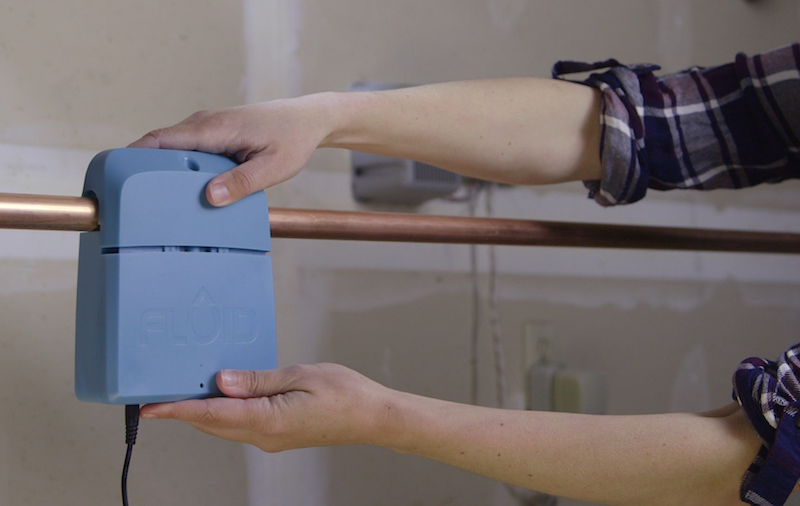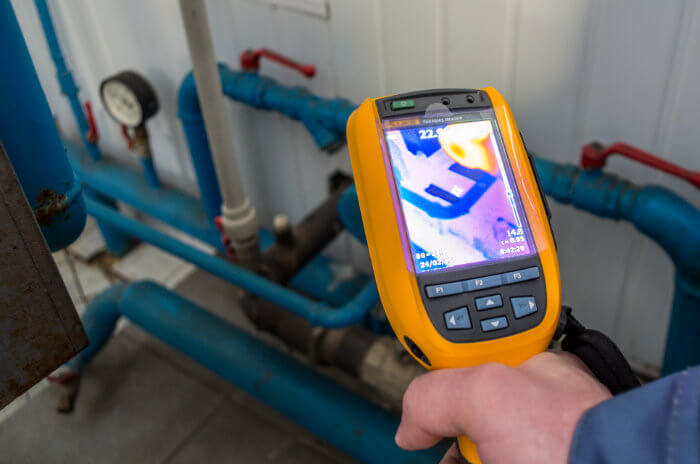Professional Water Leak Detection Services: Secure Your Home from Pricey Damages
Ingenious Solutions for Early Discovery of Water Leaks in Buildings and Framework
From innovative leak detection innovations to the implementation of IoT sensors for real-time tracking, the landscape of leak prevention is developing quickly. Automated water flow analysis systems are reshaping how leaks are determined and dealt with, paving the way for a proactive method to water leak discovery.
Advanced Leakage Detection Technologies
Advanced leak detection technologies, equipped with cutting-edge sensors and formulas, play a critical duty in quickly determining and identifying water leakages in numerous setups. These innovations employ a combination of acoustic, thermal, and electromagnetic noticing methods to detect leakages precisely. Acoustic sensors discover the audio of escaping water, enabling for accurate localization of the leakage source. Thermal imaging identifies temperature adjustments triggered by water leak, providing one more reliable technique for leakage recognition. Electro-magnetic sensors can determine changes in magnetic fields brought on by water, providing yet an additional layer of leak detection capacity.

IoT Sensors for Real-Time Tracking
In the world of modern water leak detection, the combination of IoT sensing units for real-time surveillance stands for a pivotal innovation in enhancing proactive leak detection abilities. These sensing units use continual surveillance of water systems, offering real-time information on water flow prices, pressure variations, and temperature modifications. By leveraging IoT innovation, these sensing units can detect even the smallest anomalies in water use patterns, enabling very early recognition of possible leakages prior to they rise right into significant problems.
IoT sensors transfer data to a centralized platform, where advanced algorithms analyze the information and create signals or alerts when abnormalities are discovered. This real-time surveillance ability enables building proprietors or facility managers to without delay resolve leakages, minimizing water damages, lowering repair service expenses, and conserving water sources.
Moreover, IoT sensors can be integrated with building administration systems, enabling automated responses to discovered leakages, such as turning off water shutoffs or activating pumps to reduce the effect of leaks. On the whole, the application of IoT sensors for real-time surveillance substantially enhances the performance and efficiency of water leakage discovery in buildings and facilities.
Machine Understanding Algorithms for Leak Prediction

One trick benefit of using maker knowing for leak prediction is its capacity to continuously learn and boost its precision in time. As even more data is accumulated and fed right into the algorithm, it can fine-tune its predictions and adjust to changing problems, ultimately enhancing the reliability of leakage detection systems.
Moreover, equipment knowing algorithms can aid in recognizing refined signs of leaks that might go unnoticed by typical monitoring methods. water leak detection. find more information By examining complex data collections in real-time, these algorithms can give early warnings and informs, permitting for prompt treatment and preventive upkeep to mitigate prospective water damage and linked costs
Using Thermal Imaging for Leakage Discovery
Thermal imaging technology supplies an encouraging approach for identifying water leaks in numerous systems and frameworks. By utilizing infrared radiation and temperature variations, thermal imaging electronic cameras can determine surprise leaks that are not easily visible to the nude eye. When water runs away from pipelines or frameworks, it often transforms the temperature level of the surrounding area, creating temperature differentials that thermal cams can catch. These temperature irregularities are after that equated right into noticeable photos, highlighting the specific location of the leak.
One of the vital advantages of thermal imaging for leak discovery is its non-intrusive nature. In general, the usage of thermal imaging innovation improves the performance and accuracy of water leakage detection, making it a beneficial tool for keeping the stability of structures and facilities.
Automated Water Flow Analysis Equipments
Exactly how can computerized water flow evaluation systems transform the discovery and management of leakages in different systems and infrastructures? Automated water flow evaluation systems provide an aggressive approach to leakage discovery by continuously checking water flow you can try these out prices and patterns. By developing baseline information, these systems can promptly determine inconsistencies that may click site suggest a leakage, making it possible for timely treatment to prevent considerable damages.
These systems utilize sophisticated formulas to analyze real-time data and supply prompt alerts when anomalies are found, permitting swift action to be taken. Furthermore, computerized water circulation analysis systems can be incorporated with structure monitoring systems or IoT platforms, enhancing general effectiveness and making it possible for remote surveillance capabilities.
Moreover, the information accumulated by these systems can be used for predictive upkeep objectives, aiding to determine possible powerlessness in the framework prior to leaks occur. Overall, the implementation of computerized water circulation analysis systems can significantly enhance leak discovery and management methods, eventually resulting in cost savings, reduced water wastefulness, and increased sustainability in buildings and framework.

Conclusion
In verdict, the assimilation of advanced leak detection innovations, IoT sensing units, artificial intelligence algorithms, thermal imaging, and automatic water circulation evaluation systems uses ingenious options for very early detection of water leaks in buildings and infrastructure. These modern technologies make it possible for real-time surveillance, forecast of leakages, and effective detection methods to prevent water damages and wastefulness. Applying these options can aid in keeping the stability and sustainability of water systems in various setups.